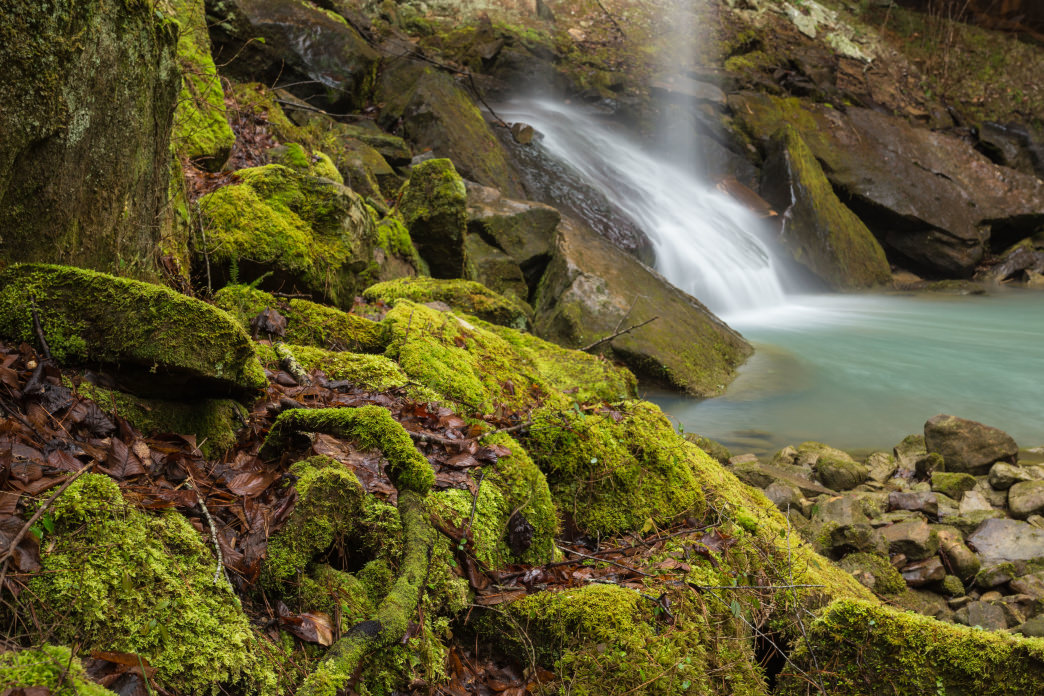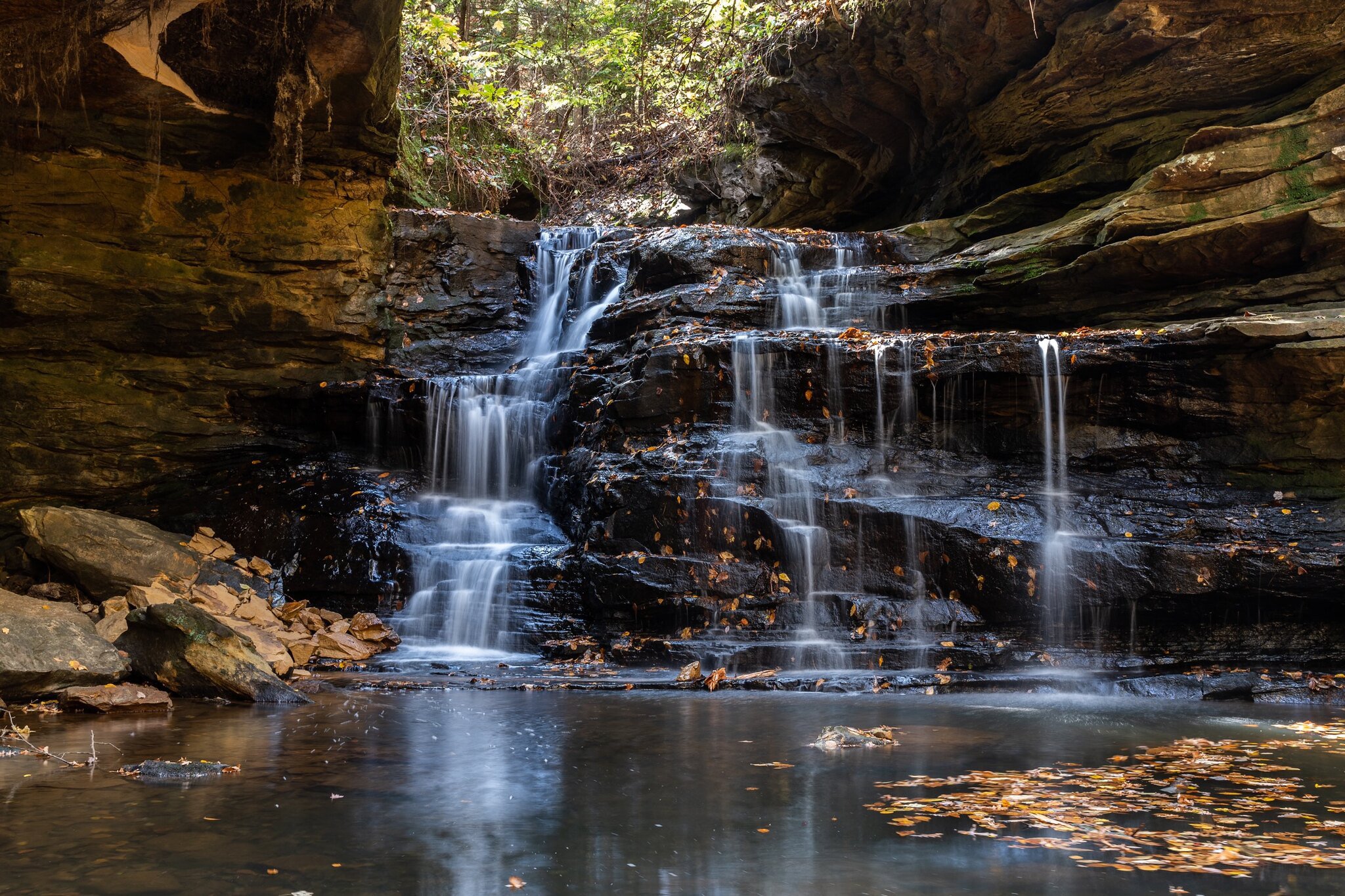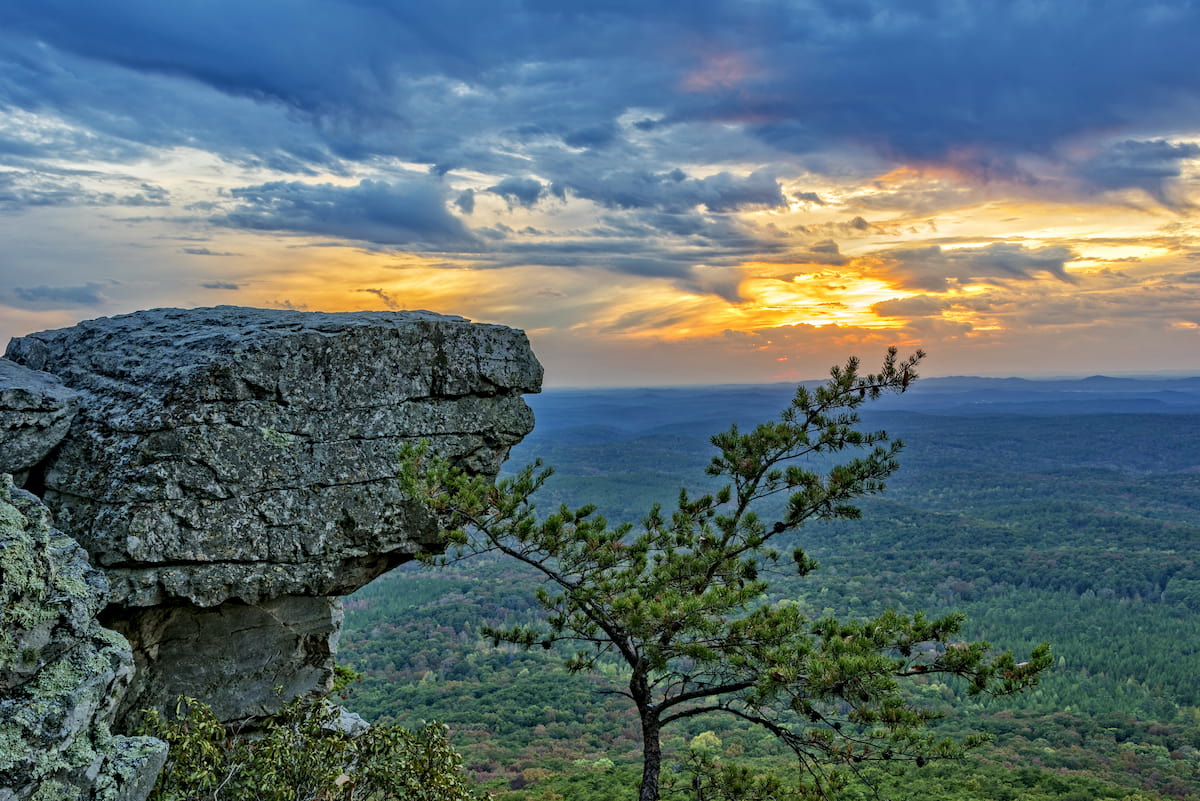The Conecuh National
Forest
The Conecuh National Forest is the state’s southernmost beauty, and it covers over 84,000 areas.
It sets between the towns of Andalusia, Alabama, and the Florida state line.
It covers the counties of Escambia and Covington, and rests in the East Gulf Coastal Plain physiographic region.
Because of this, it is very level in nature, with gentle slopping terraces as well as flood plains, and sets about 100 feet above seas level.
The History of The Conecuh National Forest
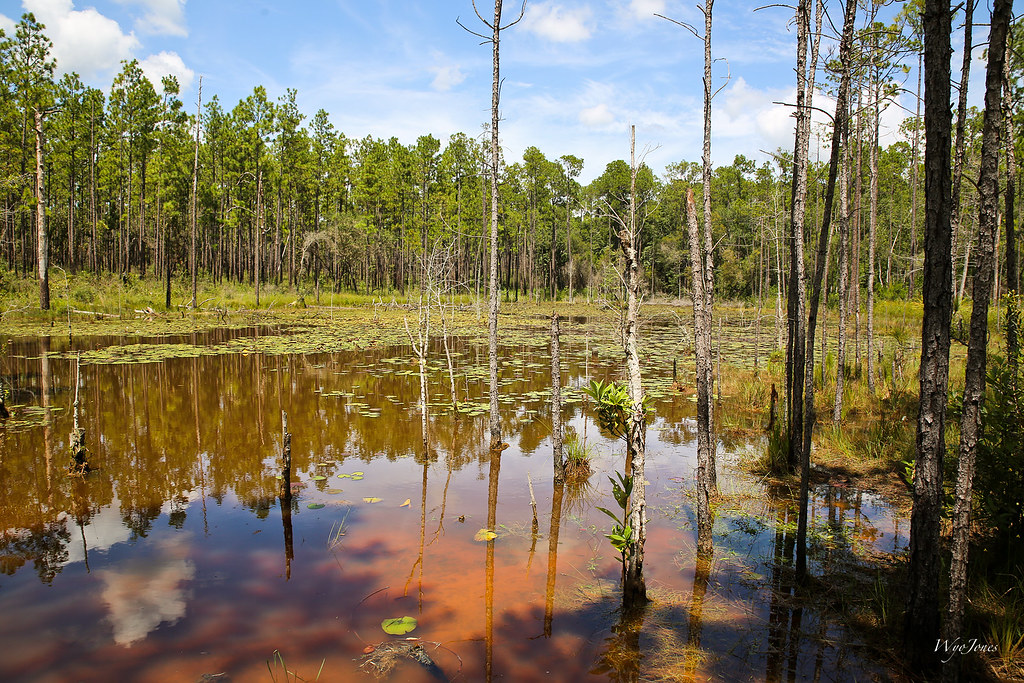 Swamp At the Conecuh National Forest
Swamp At the Conecuh National ForestThe Conecuh National Forest has a rich and unique history, as most all of the land located there had been totally deforested by the year 1930, as the result of clear cutting.
After this, the United States Forest Service reforested it with fast-growing pines, however, this species of tree very quickly attracted the deadly pine beetle.
The National Reservation Commission then established the purchase of this land, called the Conecuh Purchase Unit, in January of 1935.
One year later, The Conecuh National Forest was officially created, at that time, it only contained about 54,000 acres, and almost all of them were cut down and burned down.
This forest had and still does a distinct flavor of mist-laden hardwood swamps, pitcher plant bogs, as well as the traditional coastal plain pine forest.
However, it is also the home to upland scrub oak and dogwoods, as well as winding streams and cypress ponds.
The clear-cutting that was down to these lands in the 1930’s almost devastated it, as well as reducing the natural habitat for the endangered, red-cocked woodpecker.
This beautiful and natural forest has been undergoing a complete reforestation since, away from the slash pine and the beetle issues to something much better.
It is being replaced with the native longleaf pine, which over time will increase the number or red-cocked woodpeckers as these trees begin to mature.
The Continued Growth of The Conecuh National Forest
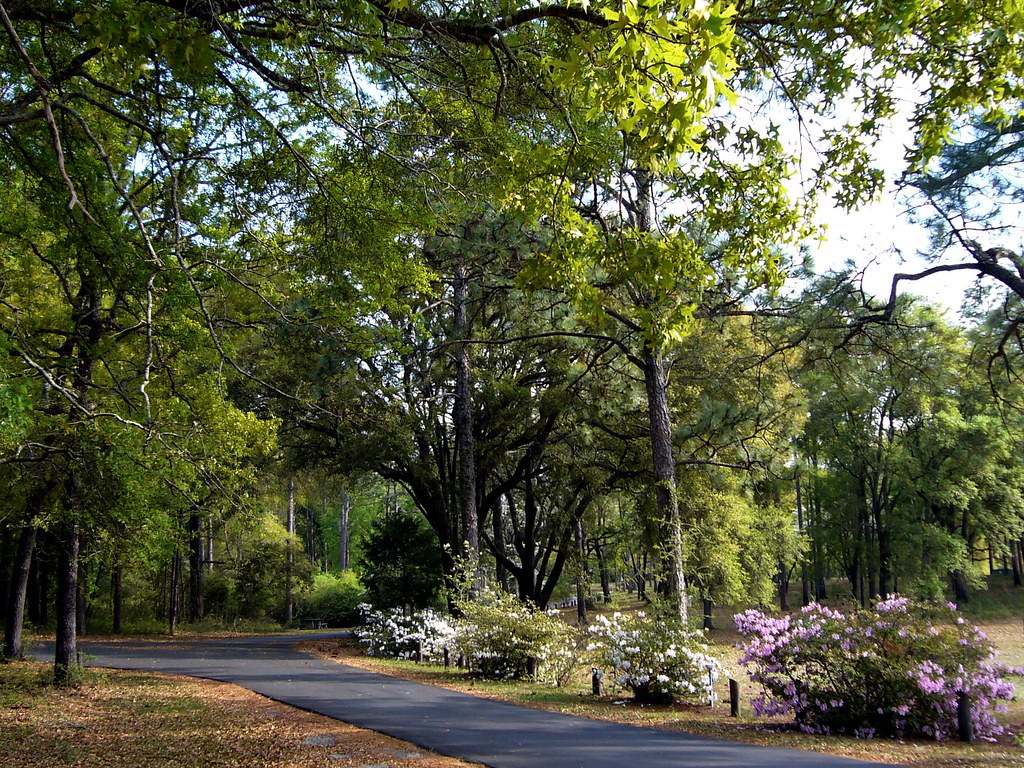 The Beauty of the Forest
The Beauty of the ForestThe Conecuh National Forest continues to roar back to life to this day, and the United States Forest Service is also using controlled burning for several important reasons.
These include retaining the grasses and sedge marsh plants found there, and the University of Auburn as well as other intuitions have been helping long-term.
They are helping to restore the populations of endangered of the red-cocked woodpeckers, the gopher tortoise, as well as the indigo snakes that help keep the ecosystem free of killer predators.
The name “Conecuh” is believed to from the Muskogee, and it means the “land of cane”, as there are also numerous canebrakes located there.
A canebrake is technically defined as a thicket of any variety of Arundinaria grasses, and as a bamboo, they can grow in thickets up to 24 feet tall.
The land found in this national forest is a prime example of habitats that are associated with the species found in these types of ecosystems.
The shallow ponds and bogs are maintained by regular ground fires, and this rich ecological backdrop sets the stage for all kinds of recreation for you and your family to enjoy.
The Things to Do at The Conecuh National Forest
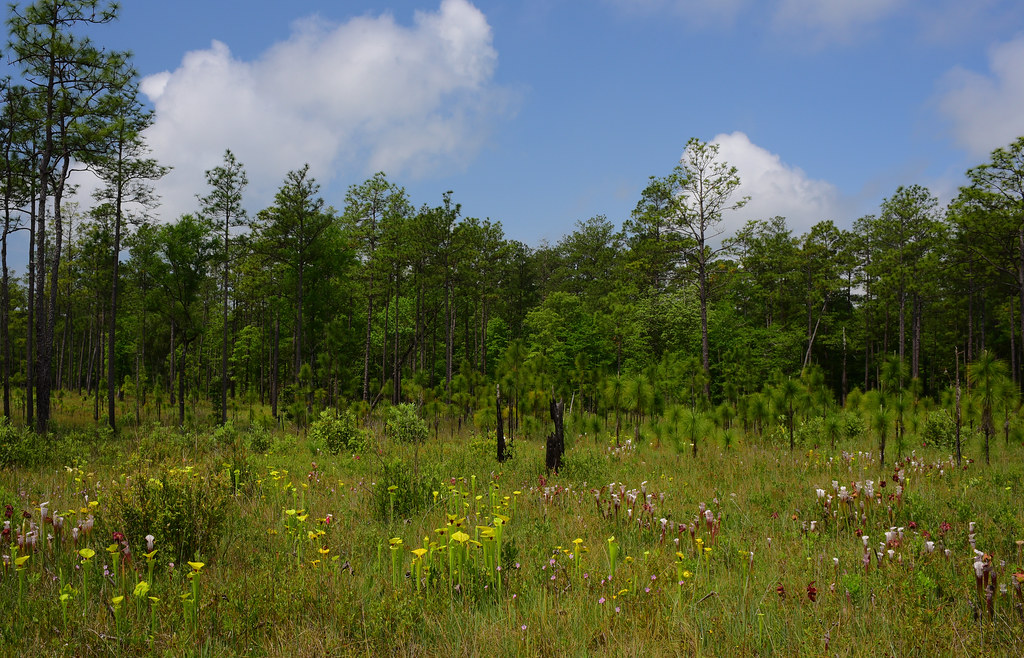 The Fields in Bloom at the Forest
The Fields in Bloom at the ForestThere are numerous recreational opportunities for you and your family at The Conecuh National Forest, and here is the first list.
- Hiking and Biking Trails
- Camping
Hiking and Biking Trails
The Conecuh Trail
The hiking trails at the forest start with the Conecuh Trail, and this trail winds for over 20 miles though the coastal plain.
It was built by the Youth Conservation Corps, and starting in 1976, these young people have been extending this trail through the forest since then as well.
This trail has a very unique ecosystem that includes moss-covered cypress trees, hardwood swamps, winding creeks, as well as scrub oaks and cypress ponds.
For the hikers and backpackers, the south loop of the trail leads to Blue Springs, a very large natural spring of clear, icy blue water.
The trail crosses streams at numerous spots, and bridges have been built to help.
On the 10 miles of the North loop, Mountain Biking is welcome, as there is also a 1.5-mile Lake Shore Loop at the Open Pond for you to enjoy.
It is open year around, but because of the heat in the southern part of Alabama, the winter months are more pleasant.
Camping
The Open Pond Recreation Area is a great place for camping, as it has numerous scenic views as well as well-maintained facilities.
The campground there includes primitive sites as well as more advanced, and they will include both water and electric hook-ups.
It also has a day-use area for picnicking, and includes a group shelter that was built in in the early 1930’s by the Civilian Conservation Corps.
It still to this day enjoys its original district design and will take you back in time and history.
The Next List of Things to Do at the Conecuh National Forest
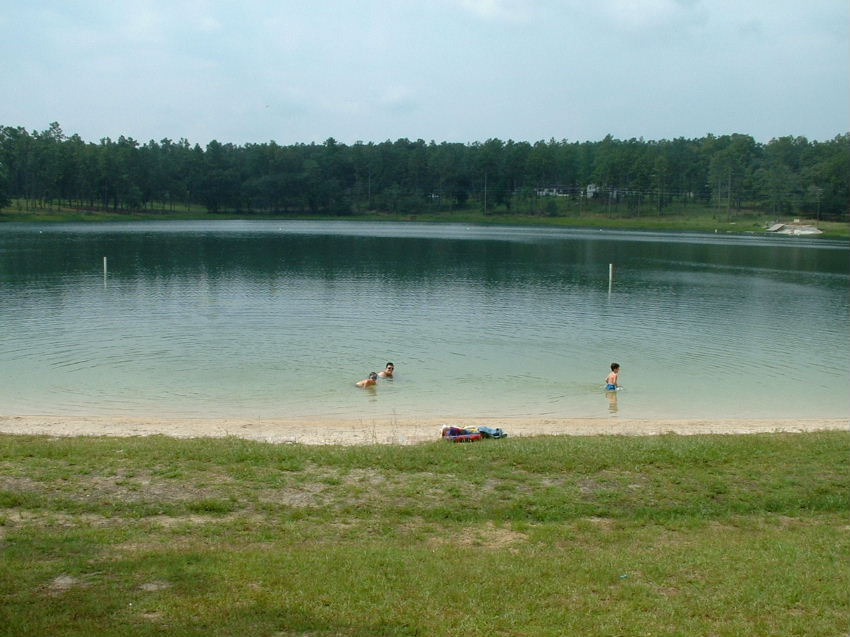 The Sand Beach at the Blue Lake
The Sand Beach at the Blue Lake- Fishing
- Shooting Range
Fishing
Fishing leads this last list of things to do at the Conecuh National Forest, and leading this list is the Blue Lake Recreation Area.
Blue Lake is also a day-use picnic and swimming area and is only 10 minutes from the camping grounds.
The fishing there is great, and there is a primitive boat ramp with access to the lake, restrooms, outdoors showers, as well as a sand beach.
The Leon Brooks Hines Public Fishing Lake is next, and it is managed by the Alabama Division of Wildlife and Freshwater Fisheries.
This makes for a great fishing trip for you and your family, as it contains bass, bream, catfish, as well as striped bass.
Boats as well as equipment rentals are also available, from a concessionaire that is located on the site.
Shooting Range
There is also the Conecuh shooting range for you to enjoy, and the new one was opened in September of 2013.
It is located in Escambia County, at the intersection of County Roads 4 and 11, near the Leon Brook Hines Fishing Lake.
This new facility includes covered shooting benches on 100-yard, 50-yard, and 25-yeard firing lines, as well as an area for shooting clays.
This very unique Conecuh National Forest is also the host to more carnivorous plants than any place in the world, as there are over 23 different species located here.
If you and your family have never visited, you will be pleasantly surprised at the uniqueness of it.
References
National Forests in Alabama - Conecuh National Forest (usda.gov)
http://encyclopediaofalabama.org/article/h-1354

Alabama Gift Store
Numerous Items for You and Your Family to Enjoy
See it here at the Gift Store
Copyright 2019-2023 Alabamabackroads.com
All Rights Reserved
